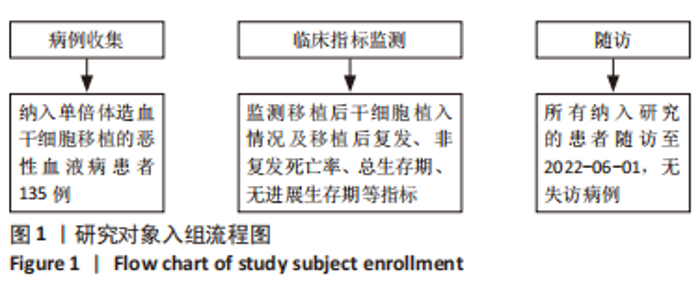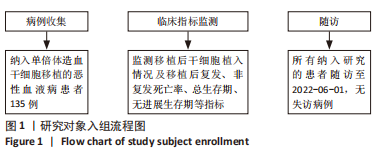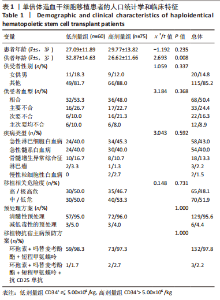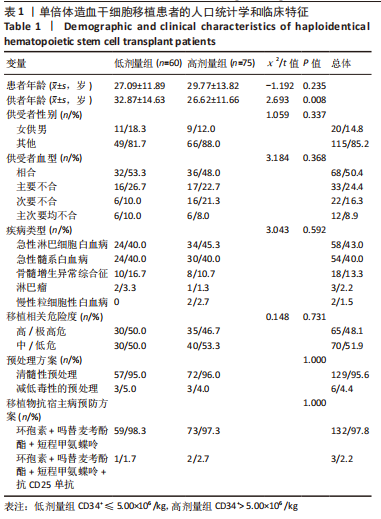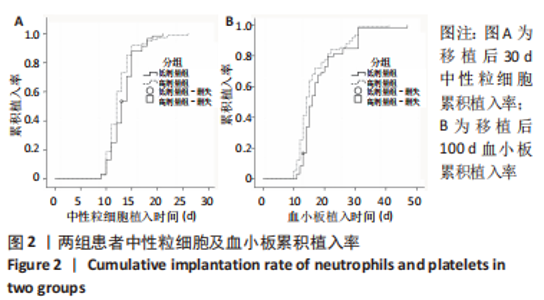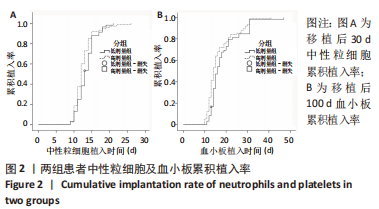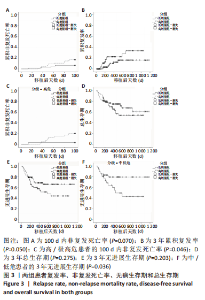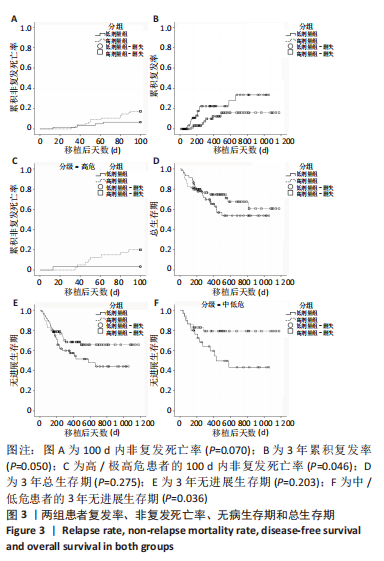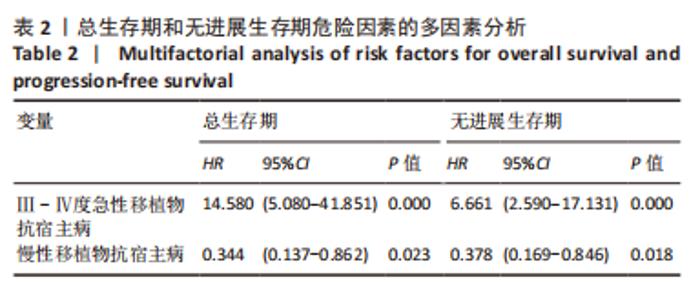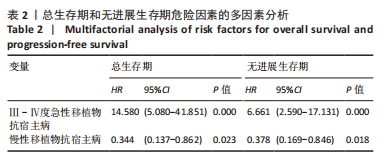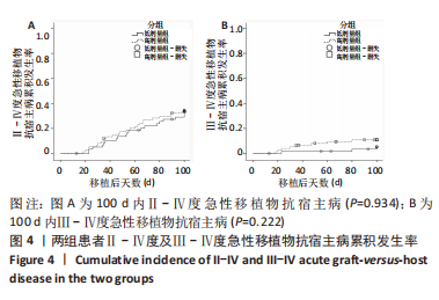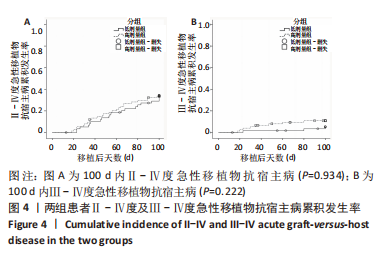[1] RASHIDI A, DIPERSIO JF, WESTERVELT P, et al. Comparison of Outcomes after Peripheral Blood Haploidentical versus Matched Unrelated Donor Allogeneic Hematopoietic Cell Transplantation in Patients with Acute Myeloid Leukemia: A Retrospective Single-Center Review. Biol Blood Marrow Transplant. 2016;22(9): 1696-1701.
[2] CHANG YJ, WANG Y, LIU YR, et al. Haploidentical allograft is superior to matched sibling donor allograft in eradicating pre-transplantation minimal residual disease of AML patients as determined by multiparameter flow cytometry: a retrospective and prospective analysis. J Hematol Oncol. 2017;10(1):134.
[3] DEVILLIER R, LEGRAND F, REY J, et al. HLA-Matched Sibling versus Unrelated versus Haploidentical Related Donor Allogeneic Hematopoietic Stem Cell Transplantation for Patients Aged Over 60 Years with Acute Myeloid Leukemia: A Single-Center Donor Comparison. Biol Blood Marrow Transplant. 2018;24(7):1449-1454.
[4] NAGLER A, LABOPIN M, HOUHOU M, et al. Outcome of haploidentical versus matched sibling donors in hematopoietic stem cell transplantation for adult patients with acute lymphoblastic leukemia: a study from the Acute Leukemia Working Party of the European Society for Blood and Marrow Transplantation. J Hematol Oncol. 2021;14(1):53.
[5] URBANO-ISPIZUA A, CARRERAS E, MARÍN P, et al. Allogeneic transplantation of CD34(+) selected cells from peripheral blood from human leukocyte antigen-identical siblings: detrimental effect of a high number of donor CD34(+) cells? Blood. 2001;98(8):2352-2357.
[6] ZAUCHA JM, GOOLEY T, BENSINGER WI, et al. CD34 cell dose in granulocyte colony-stimulating factor-mobilized peripheral blood mononuclear cell grafts affects engraftment kinetics and development of extensive chronic graft-versus-host disease after human leukocyte antigen-identical sibling transplantation. Blood. 2001;98(12):3221-3227.
[7] SOHN SK, KIM JG, KIM DH, et al. Impact of transplanted CD34+ cell dose in allogeneic unmanipulated peripheral blood stem cell transplantation. Bone Marrow Transplant. 2003;31(11):967-972.
[8] YAMAMOTO C, OGAWA H, FUKUDA T, et al. Impact of a Low CD34+ Cell Dose on Allogeneic Peripheral Blood Stem Cell Transplantation. Biol Blood Marrow Transplant. 2018;24(4):708-716.
[9] SINGHAL S, POWLES R, TRELEAVEN J, et al. A low CD34+ cell dose results in higher mortality and poorer survival after blood or marrow stem cell transplantation from HLA-identical siblings: should 2 x 10(6) CD34+ cells/kg be considered the minimum threshold? Bone Marrow Transplant. 2000;26(5):489-496.
[10] ELMARIAH H, NAQVI SMH, KIM J, et al. Impact of infused CD34+ stem cell dosing for allogeneic peripheral blood stem cell transplantation with post-transplant cyclophosphamide. Bone Marrow Transplant. 2021;56(7):1683-1690.
[11] GAUNTNER TD, BRUNSTEIN CG, CAO Q, et al. Association of CD34 Cell Dose with 5-Year Overall Survival after Peripheral Blood Allogeneic Hematopoietic Cell Transplantation in Adults with Hematologic Malignancies. Transplant Cell Ther. 2022;28(2):88-95.
[12] SALAS MQ, ATENAFU EG, BAUTISTA MR, et al. Impact of CD34+ cell dose on reduced intensity conditioning regimen haploidentical hematopoietic stem cell transplantation. Eur J Haematol. 2020;104(1):36-45.
[13] ARMAND P, KIM HT, LOGAN BR, et al. Validation and refinement of the Disease Risk Index for allogeneic stem cell transplantation. Blood. 2014;123(23):3664-3671.
[14] YANADA M, HARADA K, SHIMOMURA Y, et al. Conditioning regimens for allogeneic hematopoietic cell transplantation in acute myeloid leukemia: Real-world data from the Japanese registry studies. Front Oncol. 2022;12:1050633.
[15] SCHOEMANS HM, LEE SJ, FERRARA JL, et al. EBMT-NIH-CIBMTR Task Force position statement on standardized terminology & guidance for graft-versus-host disease assessment. Bone Marrow Transplant. 2018;53(11):1401-1415.
[16] JAGASIA MH, GREINIX HT, ARORA M, et al. National Institutes of Health Consensus Development Project on Criteria for Clinical Trials in Chronic Graft-versus-Host Disease: I. The 2014 Diagnosis and Staging Working Group report. Biol Blood Marrow Transplant. 2015;21(3):389-401.e1.
[17] RINGDÉN O, BARRETT AJ, ZHANG MJ, et al. Decreased treatment failure in recipients of HLA-identical bone marrow or peripheral blood stem cell transplants with high CD34 cell doses. Br J Haematol. 2003;121(6):874-885.
[18] MOHTY M, BILGER K, JOURDAN E, et al. Higher doses of CD34+ peripheral blood stem cells are associated with increased mortality from chronic graft-versus-host disease after allogeneic HLA-identical sibling transplantation. Leukemia. 2003; 17(5):869-875.
[19] PEREZ-SIMON JA, DIEZ-CAMPELO M, MARTINO R, et al. Impact of CD34+ cell dose on the outcome of patients undergoing reduced-intensity-conditioning allogeneic peripheral blood stem cell transplantation. Blood. 2003;102(3):1108-1113.
[20] TSIRIGOTIS P, SHAPIRA MY, OR R, et al. The number of infused CD34+ cells does not influence the incidence of GVHD or the outcome of allogeneic PBSC transplantation, using reduced-intensity conditioning and antithymocyte globulin. Bone Marrow Transplant. 2010;45(7):1189-1196.
[21] GÓMEZ-ALMAGUER D, GÓMEZ-PEÑA Á, JAIME-PÉREZ JC, et al. Higher doses of CD34+ progenitors are associated with improved overall survival without increasing GVHD in reduced intensity conditioning allogeneic transplant recipients with clinically advanced disease. J Clin Apher. 2013;28(5):349-355.
[22] ARCURI LJ, NABHAN SK, CUNHA R, et al. Impact of CD34 Cell Dose and Conditioning Regimen on Outcomes after Haploidentical Donor Hematopoietic Stem Cell Transplantation with Post-Transplantation Cyclophosphamide for Relapsed/Refractory Severe Aplastic Anemia. Biol Blood Marrow Transplant. 2020;26(12):2311-2317.
[23] BRAMANTI S, CALAFIORE V, LONGHI E, et al. Donor-Specific Anti-HLA Antibodies in Haploidentical Stem Cell Transplantation with Post-Transplantation Cyclophosphamide: Risk of Graft Failure, Poor Graft Function, and Impact on Outcomes. Biol Blood Marrow Transplant. 2019;25(7):1395-1406.
[24] CIUREA SO, ZHANG MJ, BACIGALUPO AA, et al. Haploidentical transplant with posttransplant cyclophosphamide vs matched unrelated donor transplant for acute myeloid leukemia. Blood. 2015;126(8):1033-1040.
[25] REMBERGER M, TÖRLÉN J, RINGDÉN O, et al. Effect of Total Nucleated and CD34(+) Cell Dose on Outcome after Allogeneic Hematopoietic Stem Cell Transplantation. Biol Blood Marrow Transplant. 2015;21(5):889-893.
[26] NAKAMURA R, AUAYPORN N, SMITH DD, et al. Impact of graft cell dose on transplant outcomes following unrelated donor allogeneic peripheral blood stem cell transplantation: higher CD34+ cell doses are associated with decreased relapse rates. Biol Blood Marrow Transplant. 2008;14(4):449-457.
[27] REMBERGER M, GRØNVOLD B, ALI M, et al. The CD34+ Cell Dose Matters in Hematopoietic Stem Cell Transplantation with Peripheral Blood Stem Cells from Sibling Donors. Clin Hematol Int. 2020;2(2):74-81.
[28] REMBERGER M, KUMLIEN G, ASCHAN J, et al. Risk factors for moderate-to-severe chronic graft-versus-host disease after allogeneic hematopoietic stem cell transplantation. Biol Blood Marrow Transplant. 2002;8(12):674-682.
[29] DHÉDIN N, PRÉBET T, DE LATOUR RP, et al. Extensive chronic GVHD is associated with donor blood CD34+ cell count after G-CSF mobilization in non-myeloablative allogeneic PBSC transplantation. Bone Marrow Transplant. 2012;47(12):1564-1568.
[30] 危薇,丁丽,郑晓丽,等.移植物成分对单倍体相合造血干细胞移植治疗再生障碍性贫血后急性移植物抗宿主病的影响[J].中国实验血液学杂志,2018, 26(5):1442-1446.
[31] 陈鹏,陈惠仁,何学鹏,等.供者细胞回输数量对单倍型造血干细胞移植后急性移植物抗宿主病的影响[J].白血病•淋巴瘤,2016,25(1):53-56.
[32] YOKOYAMA Y, MAIE K, FUKUDA T, et al. A high CD34+ cell dose is associated with better disease-free survival in patients with low-risk diseases undergoing peripheral blood stem cell transplantation from HLA-matched related donors. Bone Marrow Transplant. 2020;55(9):1726-1735.
|
